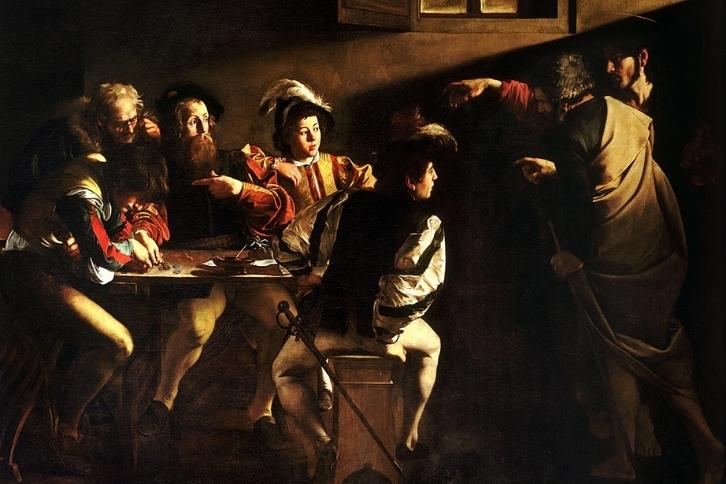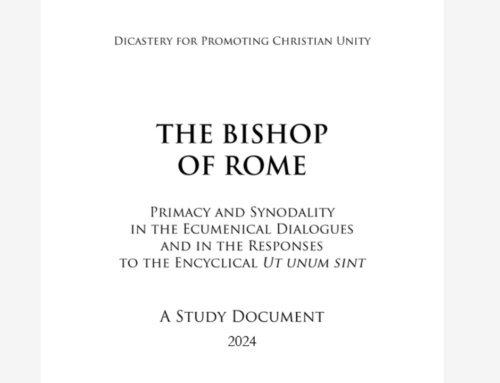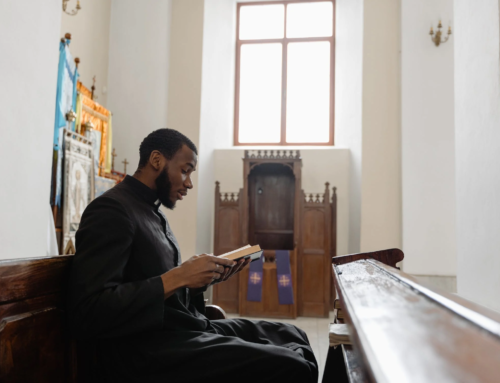Review for Religious is pleased to offer a new essay format: group book reviews on a single topic. We select topics which may be of interest to religious but are not specifically about religious life. For our inaugural bookshelf, biblical scholar Sr. Joan Cook, SC reviews a broad sampling of recent books on biblical studies. The first half of her reviews are below; click here for part 2.
Pope Francis: The Gospel of Matthew: A Spiritual and Pastoral Reading. Maryknoll, NY: Orbis Books, 2020. Pp. xiii+257. $22.
This is the first of Pope Francis’s books on the Gospels. His second book, The Gospel of Luke: A Spiritual and Pastoral Reading (Maryknoll, NY: Orbis Books, 2021) appeared too late to be included with these reviews. It would be a valuable resource as Liturgical Year C begins with readings from Luke’s Gospel.
In the Introduction, Francis explains the purpose of the book: to offer the reader personal enrichment and deeper understanding, move the reader closer to Jesus, discover the hidden treasures in God’s word, and know God more intimately. Francis’s own familiarity with Scripture is evident throughout his reflections on the intimate relationship between God and humanity.
The book is not a traditional commentary but rather a series of meditations on different scenes in Matthew’s Gospel. Throughout the book’s twenty-eight chapters, Francis frequently refers to his earlier writings, homilies and other speeches, and invites readers to contemplate how God is present in the challenges of their lives. For example, in his comments on the Transfiguration (Matthew 17:1–9) Francis points out that Jesus showed himself to the three in order to teach them, not “to circumvent the cross, but to see where the cross would lead” (164). He notes regarding Matthew 20:1–16 (the parable of the Workers in the Vineyard) that, for the many people who suffer because of unemployment, poverty and hunger, this kind of hardship “takes its toll on the serenity of family life” (183).
The book ends with fourteen pages of bibliography and notes that refer to Francis’s earlier writings. The depth of the meditations and the way Francis applies them to life are a treasure and source of inspiration and encouragement to readers who wish to refer to particular Gospel passages or to read the entire Gospel chronologically for information and inspiration.
Gerhard Lohfink, The Forty Parables of Jesus. Translated by Linda M. Maloney. Collegeville, MN: Liturgical Press, 2021. Pp. xiii+256. $29.95.
Lohfink’s latest book is a valuable introduction to reading the New Testament parables, to gain a richer appreciation of the stories and their context among the people in the early Christian communities. In the Preface, he explains that these stories evolved in several stages. They originally circulated among Jesus’ early followers, and eventually they were inserted into Matthew’s, Mark’s and Luke’s Gospels. Lohfink highlights the fact that the Gospel writers placed each parable in a particular context of Jesus’ teaching. This clarifies the intended lesson or interpretation the Gospel writer had in mind, leading the listener to Jesus and the already-but-not-yet reign of God.
The book has three parts: Part One: How Parables Work, Part Two: Jesus’ Forty Parables, and Part Three: What Is Different About Jesus’ Parables. In Part One, Lohfink discusses ten parables from several different sources, some from the Old Testament and others from other ancient and modern sources. He looks at how the stories are structured and how they get their point across. And when they are read in context, as part of a larger story, their meanings become more focused, enabling the reader to take to heart the message they convey.
For example, the parable of the Poor Man’s Lamb in 2 Samuel 12:1–4 tells the story of a rich man who, when he needed to entertain a visitor, chose not to kill one of his own flock. Instead he had a poor man’s only lamb killed for the meal. The tale is a heartbreaking account of the rich man’s selfishness. In context it takes on additional meaning: the prophet Nathan tells this story to King David, in the hope that David will recognize his sin after he takes the wife of one of his officers. When David pronounces that the rich man should die, Nathan says to him, “You are the man!” and David realizes he has sinned. The hearers of the story would have the opportunity to identify with one of the characters and reflect on their own responsibilities.
In Part Two, Lohfink walks readers through the forty New Testament parables. He reads each parable in detail, pointing out salient words and phrases; describes the larger story in which the parable is found; and names the layers of meaning in the words, such as metaphors, double meanings, surprising or puzzling aspects of the story that help us learn about the reign of God and the person of Jesus.
For example, he discusses the parable of the two debtors in Luke 7:41–42. There are three characters: a creditor and two debtors, one of whom owed five hundred denarii and the other fifty. Neither debtor was able to repay his debt, so the creditor canceled both debts. The parable ends with the question, “Now which of them will love him more?” Lohfink points out that the story does not explain why the debts were canceled, especially because forgiving debts was out of character for a creditor. But the absence of explanation highlights the creditor’s wholeheartedness, and leads the listener to realize that the creditor must be God. Thus the story is linked with the words of the Our Father in Matthew 6:12, “Forgive us our debts as we have forgiven our debtors.” By asking the question, “Which of them will love him more?” the story also alludes to the first Great Commandment, “You shall love the Lord your God with all your heart, and with all your soul, and with all your might.” Thus the parable upsets the prevailing attitude toward moneylenders and highlights the overwhelmingly generous love typical of the reign of God.
Part Three begins with a summary of the variety of topics, characters, and insights found in the parables. Lohfink points out the different kinds of imagery used and the ways the parables discuss so many moments in the world of the listeners. He then discusses the literary characteristics of parables. For example, they are concise, including only the essential details of the story. They follow the “rule of duality,” by which only two characters interact at a time.
The number three is significant: often a parable names three people or things, such as birds, rocky soil and thorns that prevent seed from thriving in Mark 4:4-7. Sometimes a fourth element is added, like the good soil in verse 8. In that case, a pattern of “3 + 1” is created, highlighting the fourth element and resolving the problem of the seed that does not thrive.
The rule of contrast juxtaposes two contrasting elements, such as a rich man and a poor man, the obedient son and the disobedient son, the five wise and five foolish bridesmaids. These elements make it easy to remember the details of the parable and the lesson to be learned.
The book ends with a Bibliography, Scriptural Index, and list of the Parables included in the Roman Catholic Sunday Lectionary. It can be read from cover to cover or a chapter at a time. Either way, it is a rich source of insights and information to help the reader appreciate more deeply the meaning and value of these seemingly simple New Testament stories.
Brendan Byrne, SJ: Come to the Light: Reflections on the Gospel of John. Collegeville, MN: Liturgical Press, 2021. Pp. viii+118. $19.95.
This collection of reflections on passages from John’s Gospel is based on retreat talks Byrne originally gave to priests, religious, and parish groups. It concentrates on narrative chapters in the Gospel because they invite the reader into the story and make it possible for the reader to be transformed, as Ignatius Loyola describes in the Spiritual Exercises.
The eighteen chapters reflect on the Prologue, call of the disciples, wedding at Cana, conversations with Nicodemus, the Samaritan woman, the royal official, and the accused woman; miracles of the Bread of Life, the man born blind, and the raising of Lazarus. It includes aspects of the Passion Narrative: Jesus washing the disciples’ feet, his prayer, trial, and crucifixion. It then focuses on the Empty Tomb and post-Resurrection appearances in Jerusalem and Galilee.
In each chapter, Byrne introduces the particular biblical passage, summarizes it, then elaborates on aspects that merit reflection and meditation. Several reflection questions complete each chapter.
For example, in chapter 7, “The Royal Official: John 4:46–54,” Byrne first situates the conversation in Cana, reminding the reader of Jesus’ previous conversation at the wedding in Cana. He comments on the kind of faith that results from people witnessing miracles, then moves to the deeper kind of faith that comes from believing and trusting in Jesus. The official persists in asking Jesus to come with him to cure his son’s terminal illness, but Jesus’ response is to cure the boy from a distance. Byrne then invites the reader to deeper faith in God that transcends our immediate requests and trusts in the Deity as the Giver of life.
Two reflection questions follow. The first suggests that the reader reflect on their own level of faith and on how the story challenges them to deeper faith. The second question asks the reader if the story would have been more attractive, had Jesus gone to Capernaum to heal the boy, rather than cure him from a distance. These questions assist the reader in focusing on the faith dimension of the story, looking first at the official’s growth and then at the reader’s own reality, with the possibility of being moved to believe more deeply in the healing power of God.
The book can be read continuously from beginning to end or chapter-by-chapter. The latter could be done in conjunction with Lectionary readings or according to a particular interest or need of a reader. Either way, the book invites deep and transformative reflection on the stories in John’s Gospel.
Header image: “Calling of St. Matthew,” Caravaggio, Public domain, via Wikimedia Commons






